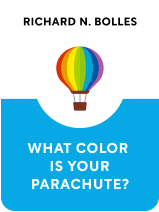

This article is an excerpt from the Shortform book guide to "What Color Is Your Parachute?" by Richard N. Bolles. Shortform has the world's best summaries and analyses of books you should be reading.
Like this article? Sign up for a free trial here .
What are functional skills? Are there different types of skills?
A skill is a capability of some sort. There are different types of skills identified in What Color Is Your Parachute? including functional skills, knowledge-based skills, and traits.
Keep reading for a discussion of the different types of skills.
Identify Different Types of Skills You Have
The goal of this petal is to figure out what your favorite skills are. These skills should be transferable to any field and they’re probably related to your natural talents and abilities. However, while filling out this petal, it’s more important to list skills you love using than skills you’re good at.
The entries on this petal will be verbs or verbs accompanied by adverbs or objects. An example petal might read: write, mentor, accurately organize documents, teach children, speak, analyze, coach, edit, typeset, research.
What Is a Skill?
“Skill” is a commonly misdefined word, even among employers and HR departments. There are three different types of skills, according to Sidney Fine:
- Functional. These skills are things you can do and usually take the form of verbs, for example, singing, teaching, and so on. They’re the basis of any job you take. There are three further categories of functional skills:
- People skills. For example, mentoring and speaking are skills you apply to people.
- Information skills. For example, comparing and synthesizing are skills you apply to information.
- Thing skills. For example, operating or setting up inanimate objects are skills you apply to things.
- Knowledge-based. These skills are things you know about and usually take the form of nouns, for example, computer programming, speaking Italian, and so on.
- Traits. These skills are ways you act and usually take the form of adverbs or adjectives, for example, punctual, passionately, and so on.
Petal #3 focuses on functional skills and traits over other different types of skills. We’ll cover knowledge-based skills in Petal #5.
Each of the three types of functional skills contains a hierarchy. For example, mentoring is the highest form of people skills while helping is the lowest. Typically, if you have a higher skill, you also possess all the skills below it. For example, if you can mentor, you can also help people. It’s best to emphasize your highest skill in the hierarchy because exercising higher-level skills gives you more freedom (for example, you can choose your schedule as a mentor but not as a customer service rep). Additionally, fewer people have higher-level skills, so there will be less competition for jobs requiring those skills.
There is one worksheet involved with filling out this petal:
Worksheet: What Are Your Functional Skills?
Most people don’t know what their functional skills are. If you do know, write them directly on your flower diagram. If you don’t, do this exercise. Here are the steps:
1. Write seven stories about seven moments in your life. Don’t choose something big like graduating from college; instead, choose a brief moment that you enjoyed. When choosing, consider, for example, stories that: aren’t work-related, demonstrate you acting differently than you normally would, or are difficult, exciting, unusual, or fun. If you really can’t think of anything, describe jobs or roles that you’ve enjoyed. Each story should have:
- A goal.
- For example, you adopted a puppy and wanted to train her as a therapy dog.
- An obstacle you had to overcome.
- The puppy was hard to train.
- The process you used to overcome the obstacle and achieve the goal.
- You researched dog training, signed yourself and the puppy up for a course, and signed up for the certification exam.
- The outcome.
- The puppy passed the exam and started working as a therapy dog at the children’s hospital.
- A statement about the outcome.
- You learned a lot about dog training and love that you did something to help sick children.
2. Carefully reread each story and figure out what functional skills you used in each to achieve your goals. For example, in the puppy story, you used some of the following skills: train, research, solve problems.
3. Look for a pattern of which functional skills keep recurring. Assuming that you followed the guideline to write stories about truly enjoyable moments, these are your favorite skills because you keep using them.
- For example, some people-related skills you might have employed are to: heal, instruct, counsel, communicate, or serve.
- Some information-related skills you might have employed are to: imagine, analyze, research, problem-solve, or compare.
- Some thing-related skills you might have employed are to: repair, drive, manufacture, restore, or carve.
4. Prioritize functional skills. Narrow the list down to your ten favorite skills (the ones you like exercising, not the ones you think will be most useful). Then, use the prioritizing grid to put them in order of importance.
5. Qualify functional skills with traits and objects. Create a list of your strongest traits. Remember that traits describe how you do things, for example, how you communicate. (To come up with the list, you can take a Myers-Briggs test, or take a Values-in-Action assessment.) Then, combine your traits and skills and add an object if necessary. For example, if the skill is “communicate,” you might specify that you can “communicate authoritatively with children.” These phrases will be your go-tos during job interviews.
- Expressing your traits as adverbs (like “authoritatively”) makes it easier to combine your traits and different types of skills into a single phrase (like “communicate authoritatively”). Some examples of traits in the form of adverbs are: energetically, tactfully, objectively, punctually, and versatilely.
Transfer your list of functional skills and accompanying traits or objects to Petal #3.

———End of Preview———
Like what you just read? Read the rest of the world's best book summary and analysis of Richard N. Bolles's "What Color Is Your Parachute?" at Shortform .
Here's what you'll find in our full What Color Is Your Parachute? summary :
- How to not just find a job, but find a job you love
- Why traditional resumes don’t find you the right job
- The 7 steps to identifying your ideal career






